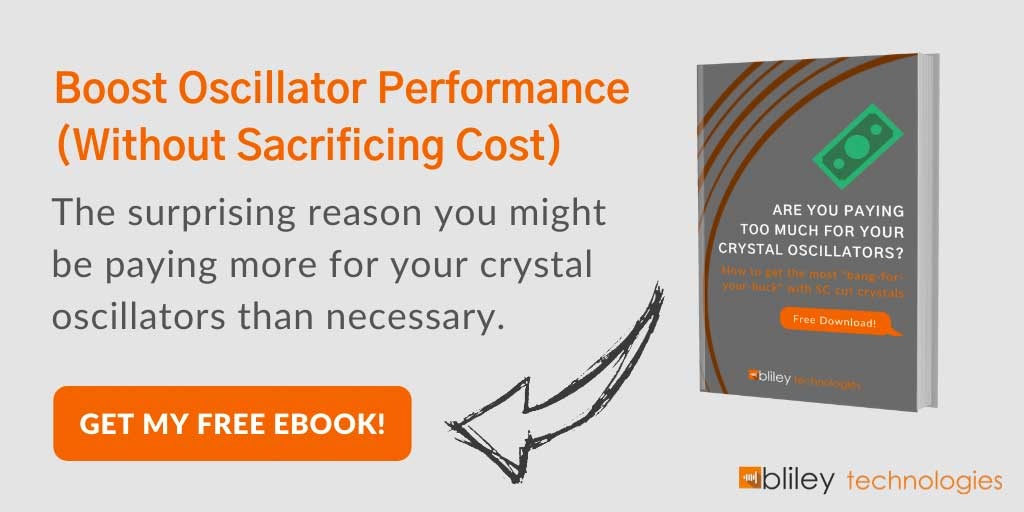
What if we told you that specifying more electronic frequency control (EFC) than you need could actually be hurting your company's wallet? Well, it very well may be!
Paying attention to whether your supplier is using AT-cut or SC-cut crystals will help you save money in the long run when it comes to oscillators. In this article, we'll review the difference between these two types of cuts and the impacts of EFC pull.
AT vs. SC-Cut Quartz Crystals
To understand why EFC pull might be creating more costs than benefits, we need to take a closer look at these two types of crystals inside your quartz crystal oscillators. For the most part, AT-cut crystals are typically cheaper, but you'll likely end up sacrificing performance in multiple areas, such as:
- Frequency vs. temperature
- Crystal aging
- G-sensitivity
While stress compensated (SC) cut crystals can be more expensive, they typically provide significantly better performance in the same areas mentioned above (and below).

Related: Understanding the Types of Crystals Inside Your Oscillators (AT-Cut vs. SC-Cut)
2 Common Impacts of EFC Pull on AT-Cut & SC-Cut Quartz Crystals in OCXOs
1. Costs
It's common for design engineers to try and save costs by using AT-cut crystals in their OCXO designs, because they're less expensive. Instead, they use more EFC pull to compensate for the lower quality performance. But the effectiveness of this strategy is usually a myth and doesn't work out in the long-run.
If you spec more EFC than you need to cover frequency deviation, costs will significantly increase for the supplier because their overall yield will go down. So in reality, there are no cost savings to be found by using an AT-cut crystal and compensating with more EFC pull.
This is one reason why we recommend just sticking with an SC-cut crystal in your designs instead of trying to save costs with an AT-cut crystal and high EFC pull.
2. Crystal Aging
The second benefit to using an SC-cut crystal in OCXOs is aging. Using EFC to maintain crystal stability over many months and years is actually very inefficient when compared to using the "natural" stability of a SC-cut crystal.
With a 100MHz SC-cut crystal, it would be realistic to see aging of around 0.1 ppm over a year, while an AT-cut crystal would see significantly higher aging of around 1 ppm per year. Expecting EFC to cover for aging in AT-cut crystals is usually not the best option.
Related: Oscillator Aging: How Long Is an OCXO's Shelf Life?
Conclusion: SC-Cut Crystals Are the Smarter Choice
When it comes to OCXOs, we recommend using SC-cut crystals instead of AT-cut crystals combined with EFC pull. AT-cut crystals combined with EFC don't actually save on costs and can lead to poor performance in the long run.
At Bliley, we're dedicated to being your trusted partner for frequency control. Need more advice on choosing the right OCXO design for your next project? Reach out to our team of experts to discuss your needs. Not ready to talk? You can also browse our full line of high performance crystal oscillators.






